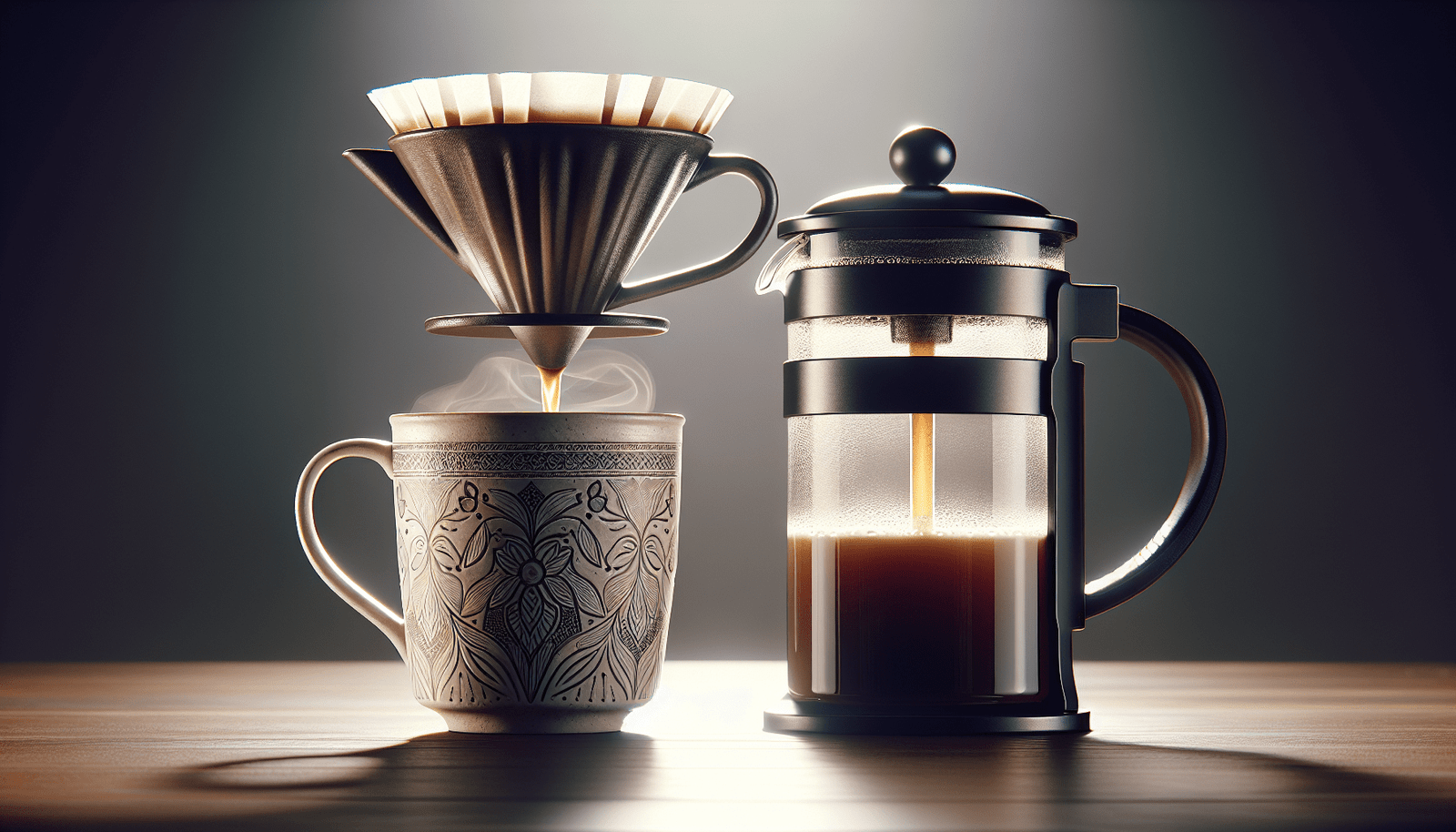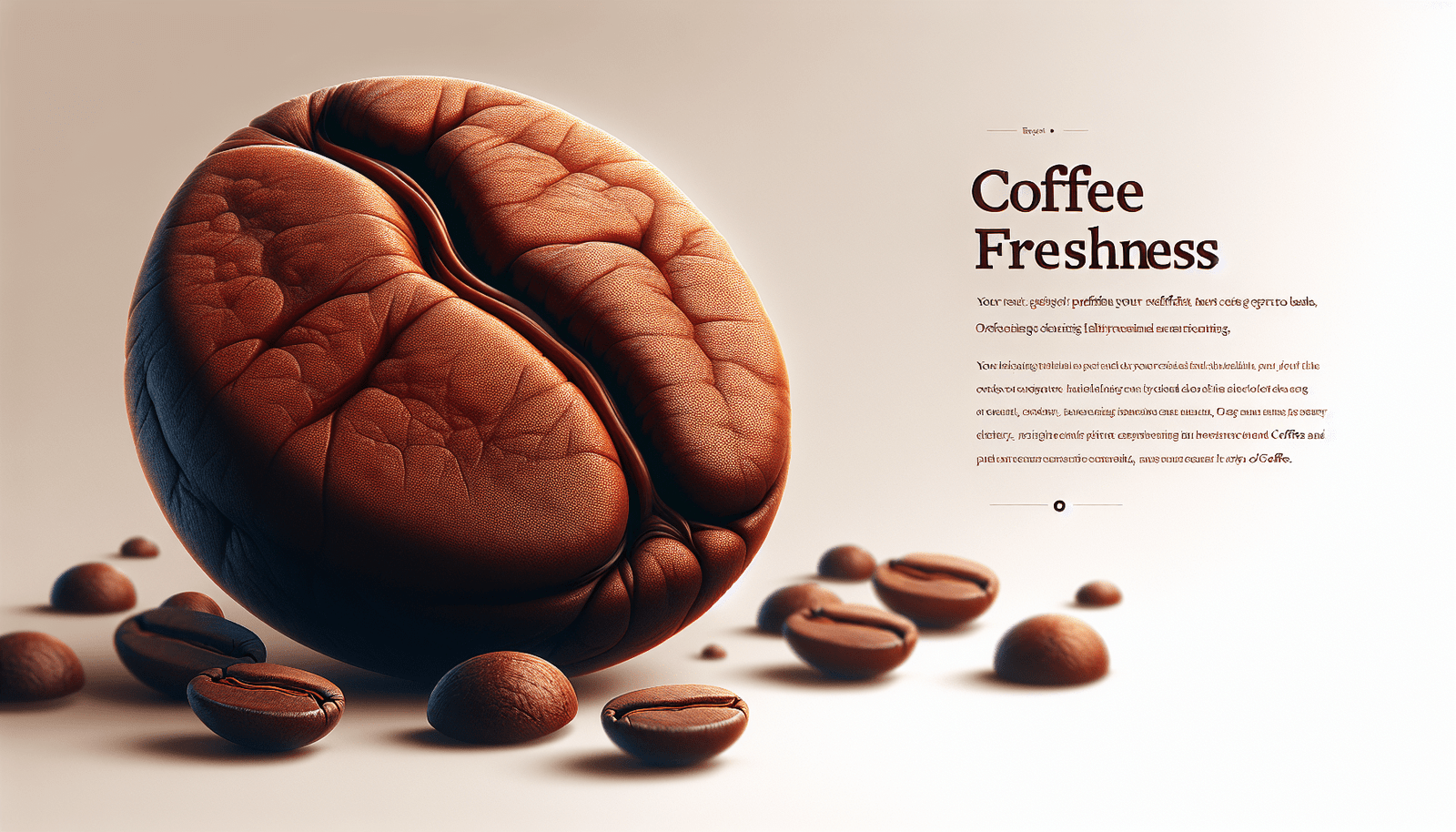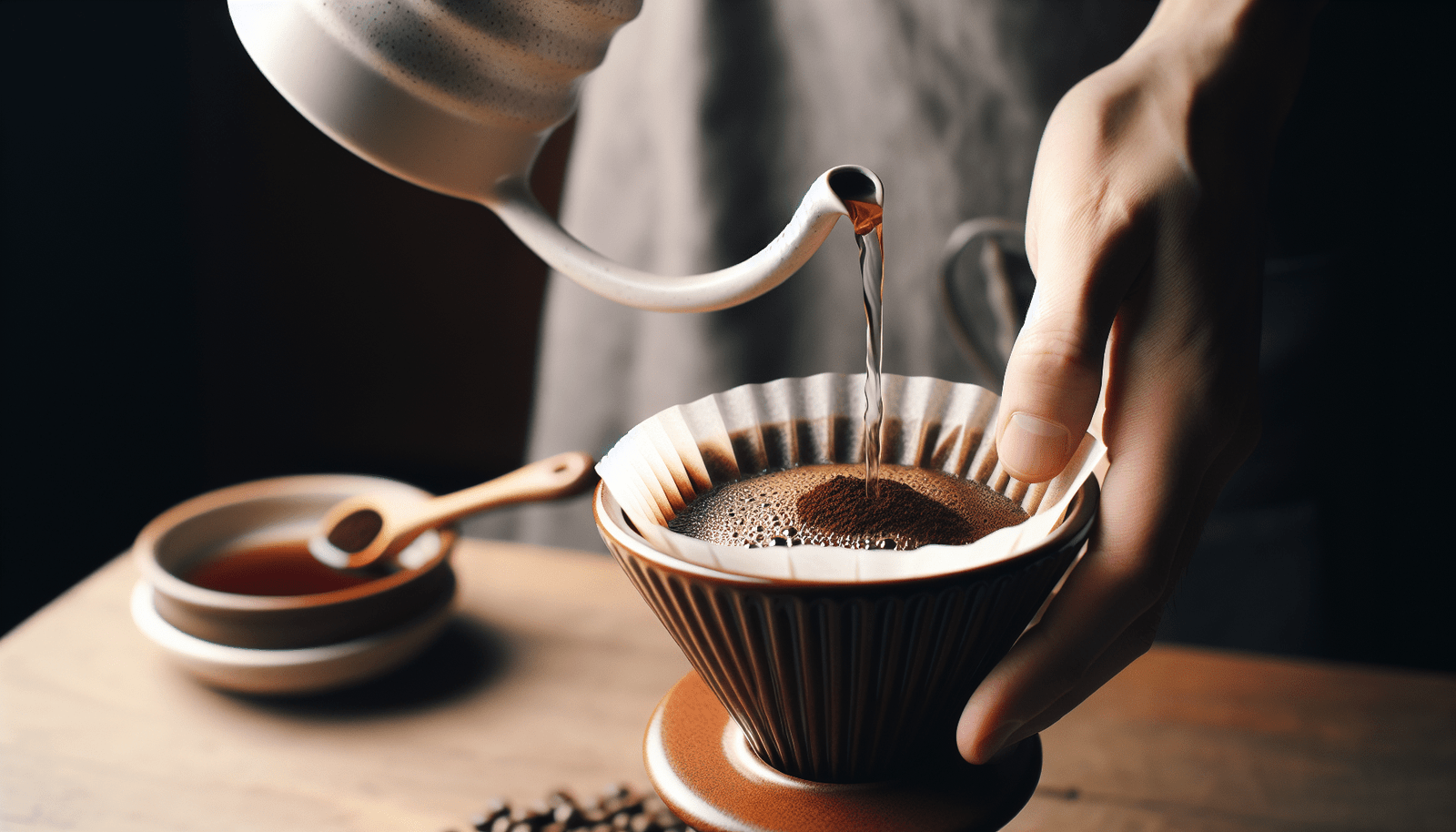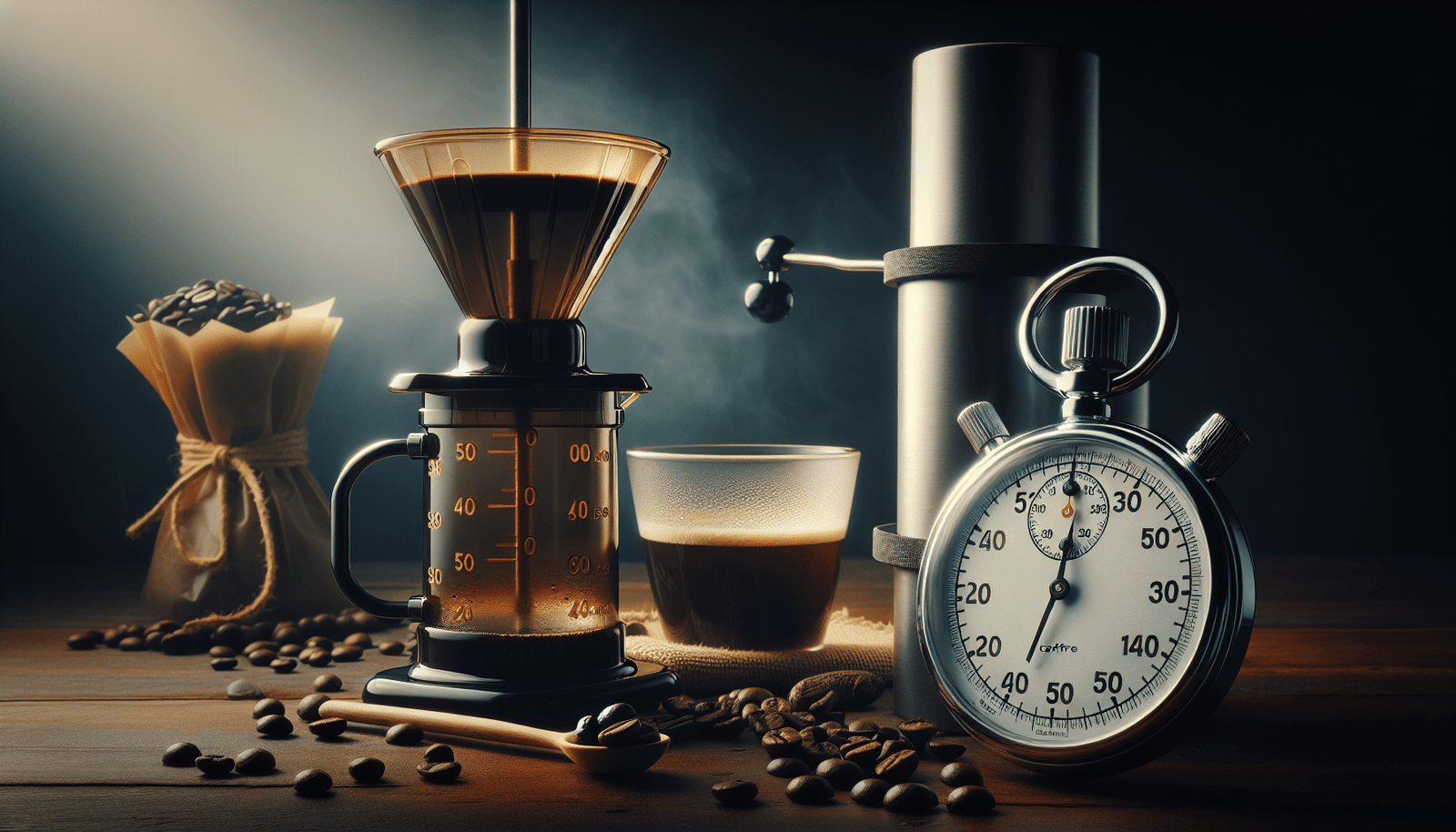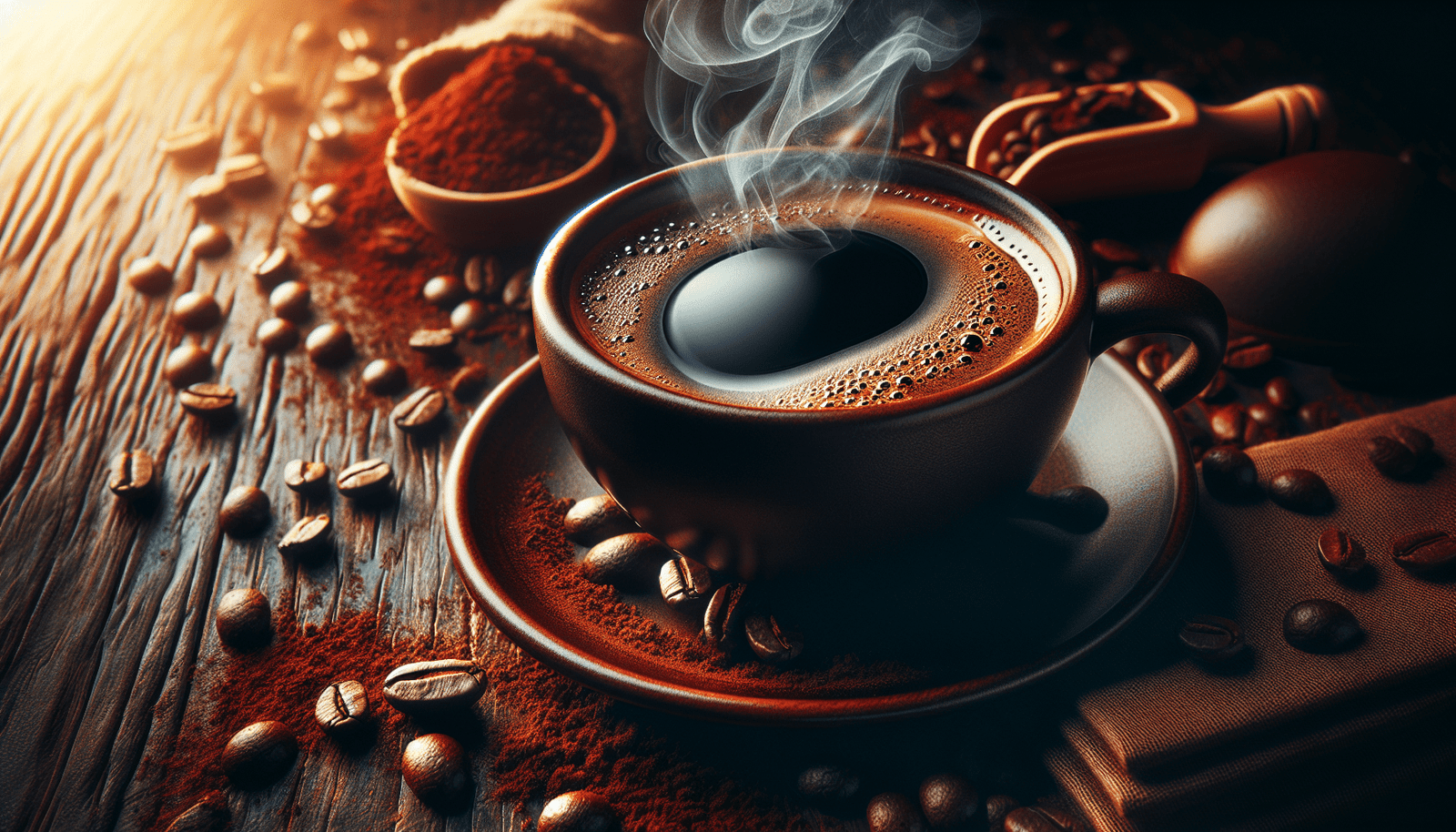Are you a coffee enthusiast searching for the perfect brewing method to elevate your morning cup? Look no further! In this article, we will explore the 7 key differences between pour over coffee and French press. Whether you prefer the delicate flavors of pour over or the robust body of French press, we’ve got you covered. So grab your favorite mug and get ready to discover the nuances that set these two popular brewing methods apart.
Brewing Method
Pour Over Coffee
Pour over coffee is a brewing method that involves manually pouring hot water over ground coffee in a filter. This method allows you to control the water flow and extraction time, resulting in a clean and crisp cup of coffee. It requires a pour over coffee maker, a cone-shaped filter, and a kettle to heat the water.
French Press
French press brewing involves steeping coarse coffee grounds in hot water for a few minutes and then pressing a plunger to separate the grounds from the liquid. This method produces a full-bodied and rich cup of coffee. It requires a French press pot, coarse coffee grounds, and hot water.
Coffee Grind
Pour Over Coffee
For pour over coffee, a medium-fine grind is typically recommended. This allows for a balanced extraction, providing a bright and flavorful cup of coffee. The grind size should be similar to that of table salt.
French Press
French press coffee requires a coarse grind to avoid sediment or “mud” in the final cup. The coarse grind helps to minimize over-extraction, resulting in a smoother and less bitter brew. The size of the grind should be similar to sea salt or breadcrumbs.
Coffee-to-Water Ratio
Pour Over Coffee
The recommended coffee-to-water ratio for pour over coffee is usually around 1:16 or 1:17. This means using 1 gram of coffee for every 16 or 17 grams of water. However, you can adjust the ratio to your preference, whether you prefer a stronger or weaker cup of coffee.
French Press
French press coffee typically follows a ratio of 1:15 or 1:16, with 1 gram of coffee for every 15 or 16 grams of water. This ratio can also be adjusted based on personal taste preferences.
Filter
Pour Over Coffee
Pour over coffee uses a paper or metal filter, which helps to remove oils and sediment from the final cup. Paper filters provide a cleaner taste, while metal filters allow more oils and flavors to pass through.
French Press
French press coffee does not require a filter as the plunger separates the grounds from the brewed coffee. This allows more oils and fine particles to remain in the final cup, resulting in a fuller-bodied and rich flavor.
Brewing Time
Pour Over Coffee
The brewing time for pour over coffee typically ranges from 2 to 4 minutes. It depends on factors such as grind size, coffee-to-water ratio, and personal preference. The water is poured in a controlled manner, allowing for optimal extraction.
French Press
French press coffee requires a longer brewing time of around 4 to 5 minutes. This allows for a thorough extraction and full-bodied flavor to develop. The coffee grounds steep in the water before pressing down the plunger.
Body and Texture
Pour Over Coffee
Pour over coffee tends to have a lighter body and cleaner texture. The paper filter removes oils and fine particles, resulting in a smoother cup of coffee with a more delicate mouthfeel.
French Press
French press coffee has a heavier body and a slightly gritty texture due to the presence of oils and sediment. This method produces a bold and robust cup of coffee, which may appeal to those who prefer a more substantial mouthfeel.
Flavor
Pour Over Coffee
Pour over coffee is known for its bright and flavorful characteristics. The clean brewing process allows the natural flavors of the coffee beans to shine through, resulting in a well-balanced and nuanced cup of coffee.
French Press
French press coffee offers a rich and intense flavor profile. The full immersion brewing method allows for a stronger extraction, resulting in a coffee with deep flavors and a more pronounced aroma.
Ease of Use
Pour Over Coffee
Pour over coffee requires some manual skill and attention to detail. The pour-over technique may take some practice to master, as it involves controlling the flow rate and maintaining consistency. However, once you get the hang of it, it becomes a rewarding and enjoyable brewing method.
French Press
French press brewing is relatively straightforward and requires minimal effort. After adding coffee grounds and hot water, you simply need to wait for a few minutes before pressing down the plunger. It is a user-friendly method that does not require any special skills or techniques.
Portability
Pour Over Coffee
Pour over coffee can be portable if you have a collapsible or travel-friendly pour-over coffee maker. These compact devices are designed for on-the-go brewing, allowing you to enjoy a quality cup of pour over coffee wherever you are.
French Press
French press coffee can be less portable due to the larger size and delicate construction of traditional glass or steel French press pots. However, there are travel-friendly options available, such as insulated stainless steel French presses, which are more suitable for transporting and brewing coffee on the go.
Cleaning and Maintenance
Pour Over Coffee
Cleaning pour over coffee equipment is relatively easy. You can discard the used paper filter and rinse the pour-over coffee maker with water. Occasionally, you may need to clean the device with mild soap to remove any residue or coffee oils.
French Press
Cleaning a French press requires more effort as it has multiple components, including a pot, plunger, and filter screen. After pressing down the plunger, you need to remove the grounds and rinse all the parts thoroughly. Disassembling the plunger for a more thorough cleaning is also recommended to remove any trapped coffee oils.
In conclusion, both pour over coffee and French press brewing methods have unique characteristics that appeal to different coffee lovers. Pour over coffee offers a clean and crisp cup with bright flavors, while French press coffee provides a bold and robust brew with a heavier body. The choice between the two ultimately comes down to personal preference in terms of flavor, ease of use, and portability. Whether you prefer the meticulous pour-over technique or the simplicity of a French press, both methods can help you enjoy a delicious and satisfying cup of coffee.
